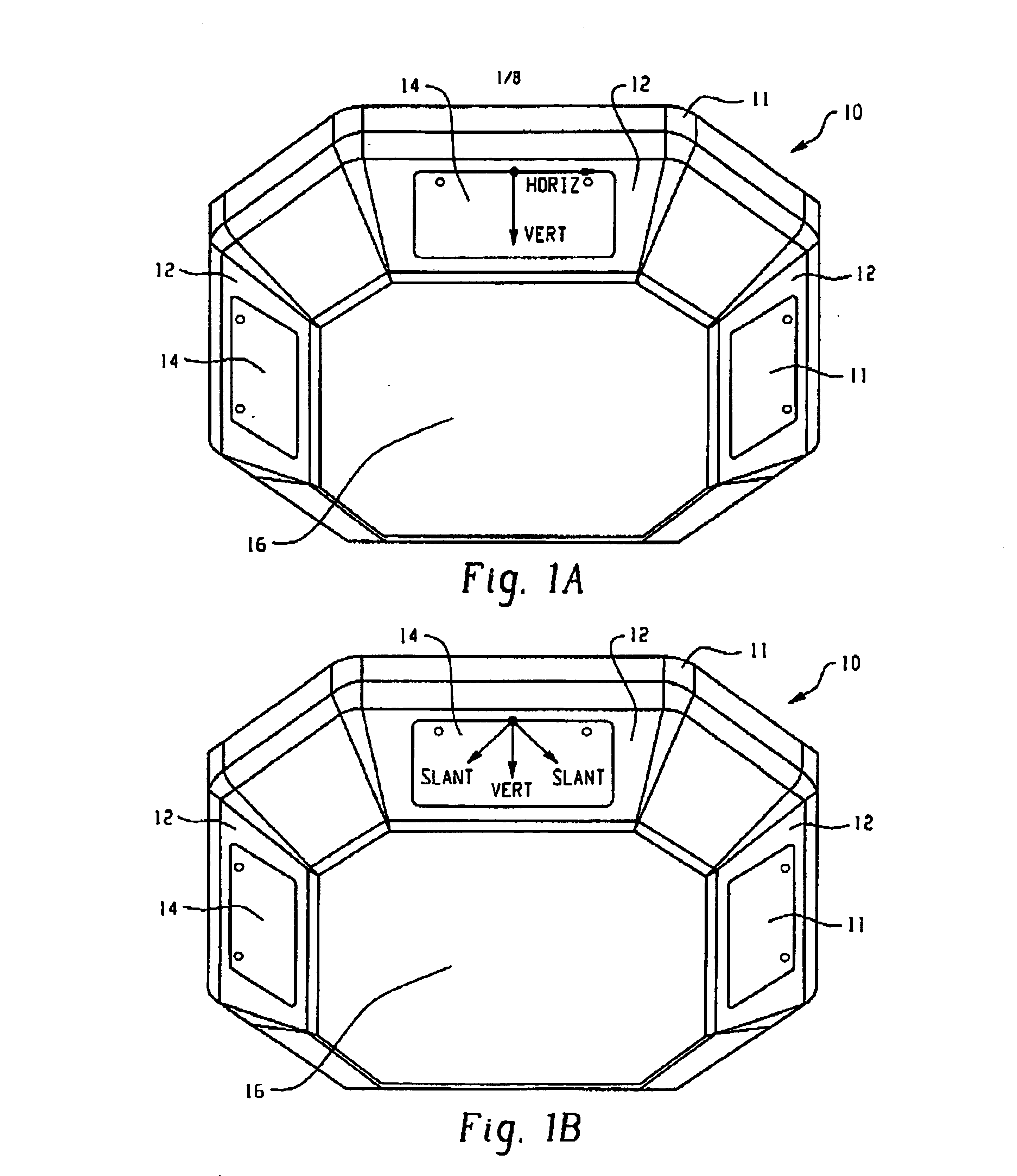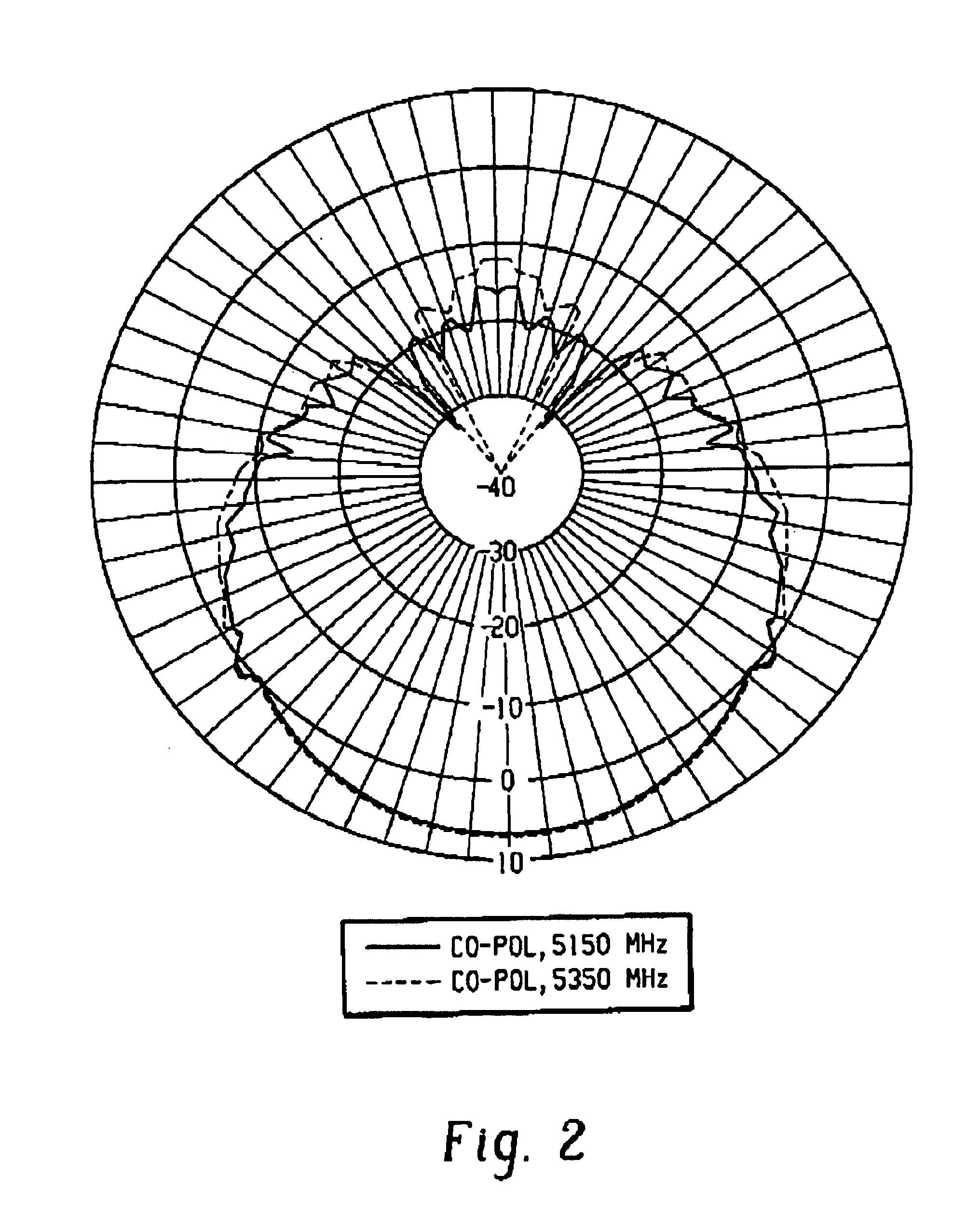Multichannel access point with collocated isolated antennas
a technology of isolated antennas and access points, which is applied in the direction of individual energised antenna arrays, independent non-interacting antenna combinations, and radiating element structural forms, etc., and can solve the problems of scaling limitations, inability to achieve throughput increases, and limited fdm
- Summary
- Abstract
- Description
- Claims
- Application Information
AI Technical Summary
Problems solved by technology
Method used
Image
Examples
Embodiment Construction
[0023]A multichannel access point is disclosed herein that reduces channel-to-channel interference by providing a number of collocated, isolated antennas, as will be set forth in detail below. In the preferred embodiment, the present multichannel AP divides an omnidirectional coverage area into discrete sectors so that a particular one of a plurality of wireless antennas is used to transmit and receive wireless signals into a specific sector of the omnidirectional space. Throughput over the omnidirectional coverage area is thereby raised by a factor equal to the number of sectors.
[0024]In one aspect of the present invention, a plurality of patch antennas is employed. In the preferred embodiment, a linearly polarized patch antenna having a parasitic element can be used, such as is disclosed in U.S. Ser. No. 10 / 146,609, the disclosure of which is hereby incorporated by reference. Such a patch antenna has a desirable front-to-back ratio and low depolarization. It has been found that mo...
PUM
 Login to View More
Login to View More Abstract
Description
Claims
Application Information
 Login to View More
Login to View More - R&D
- Intellectual Property
- Life Sciences
- Materials
- Tech Scout
- Unparalleled Data Quality
- Higher Quality Content
- 60% Fewer Hallucinations
Browse by: Latest US Patents, China's latest patents, Technical Efficacy Thesaurus, Application Domain, Technology Topic, Popular Technical Reports.
© 2025 PatSnap. All rights reserved.Legal|Privacy policy|Modern Slavery Act Transparency Statement|Sitemap|About US| Contact US: help@patsnap.com



